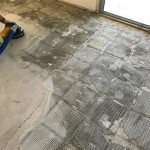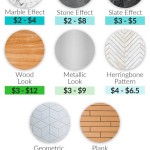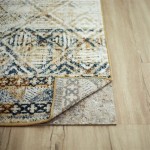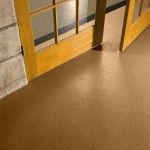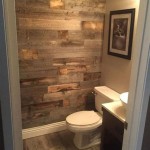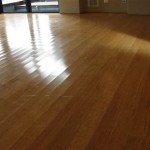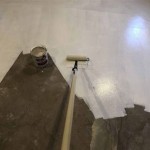How Do You Fix Cupped Wood Floors?
Cupping, a phenomenon where the edges of wood floor planks are higher than the center, can detract from the beauty and functionality of a floor. It's often caused by excessive moisture. Addressing this issue effectively requires understanding the underlying causes and applying appropriate remediation techniques.
Identifying the Source of Moisture
The first step in fixing cupped wood floors is identifying the source of the excess moisture. This often involves a thorough inspection of the property, both inside and out. Potential sources include plumbing leaks, high humidity levels, inadequate subfloor ventilation, and moisture intrusion from the ground or exterior walls. A moisture meter can be a valuable tool in this assessment, providing quantitative data on moisture content within the wood and subfloor.
Inspecting plumbing for leaks involves checking under sinks, around toilets, and behind appliances like dishwashers and refrigerators. Look for signs of water damage or staining on ceilings below affected areas. High humidity can often be addressed with improved ventilation, air conditioning, or dehumidifiers. Inadequate subfloor ventilation, especially in crawl spaces, can be remedied by installing additional vents or fans. Moisture intrusion from the ground requires ensuring proper vapor barriers are in place and functioning correctly.
Addressing the Moisture Problem
Once the moisture source is identified, steps must be taken to eliminate it. This might involve repairing leaking pipes, improving ventilation, installing a vapor barrier, or addressing drainage issues around the foundation. It’s crucial to address the underlying moisture problem before attempting to repair the cupped floors, as any repairs will be ineffective if the moisture issue persists. The affected area should be allowed to dry thoroughly after the source of moisture is eliminated. This drying process can take several weeks or even months, depending on the severity of the moisture problem and the ambient conditions.
Monitoring the moisture content of the wood during the drying process is essential. This can be done using a moisture meter to track the progress and ensure the wood reaches an acceptable moisture level before repairs begin. Patience is key during this phase, as rushing the process can lead to further problems down the line.
Repairing the Cupped Wood Floors
After the moisture issue is resolved and the wood has adequately dried, the cupped floors can be repaired. The extent of the damage dictates the appropriate repair method. Minor cupping may resolve itself as the wood dries. For more severe cupping, sanding and refinishing may be necessary. In extreme cases, where cupping is significant and accompanied by other damage, replacing the affected boards might be the only viable solution.
Sanding involves removing the top layer of the wood to create a level surface. This is typically done with a drum sander or orbital sander, starting with coarse grit sandpaper and gradually moving to finer grits for a smooth finish. After sanding, the floor is refinished with a stain and sealant to protect it and restore its appearance.
If the cupping is too severe for sanding, replacing the affected boards is the recommended course of action. This involves carefully removing the damaged boards and replacing them with new ones that match the existing flooring. Proper acclimation of the new boards to the environment's temperature and humidity is critical to prevent future issues.
Preventing Future Cupping
Preventing future cupping involves maintaining a stable environment within the home. This includes controlling humidity levels, ensuring adequate ventilation, and promptly addressing any leaks or moisture intrusion. Regular inspections and maintenance can help identify potential problems early on and prevent them from escalating into more significant issues.
Using a humidifier during dry seasons can prevent the wood from shrinking and potentially cupping. Conversely, using a dehumidifier during humid seasons can prevent excessive moisture absorption. Regularly inspecting and cleaning gutters and downspouts can prevent water from accumulating around the foundation and seeping into the subfloor. Maintaining proper grading around the exterior of the house can also help divert water away from the foundation.

What You Need To Know About Wood Floor Cupping Signature

Avoid Cupping And Buckling In Hardwood Floors Twenty Oak

Avoid Cupping And Buckling In Hardwood Floors Twenty Oak

What Is Peaking Buckling And Cupping In Wood Floors Builddirect

How To Fix Cupped Hardwood Flooring

How To Fix Wooden Floor Problems Cupping Crowning Bouncing And Gapping

Water Damaged Wood Floors Repairing Cupped Hardwood R4 Restoration

Understanding And Preventing Cupping In Hardwood Floors

Faq What Causes Hardwood Floors To Cup Superior Re

What To Do When A Water Leak Damages Your Hardwood Floor Totta Hardwoods
See Also
